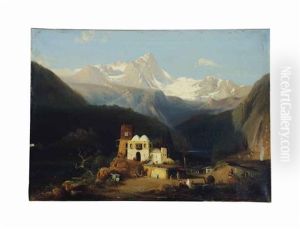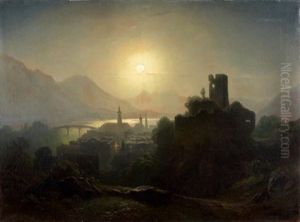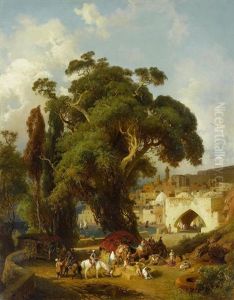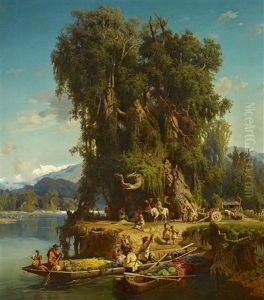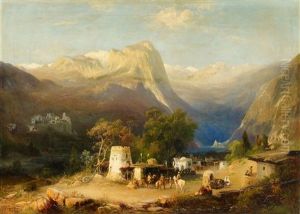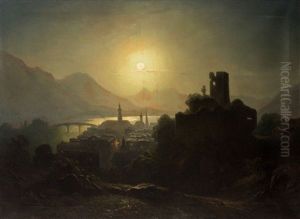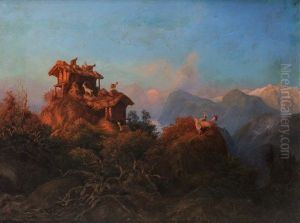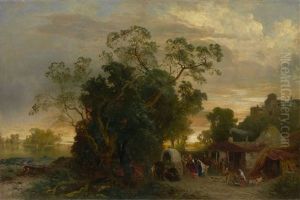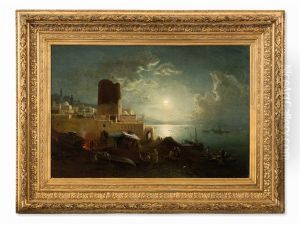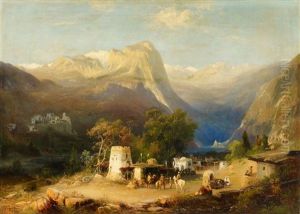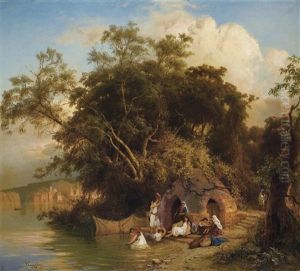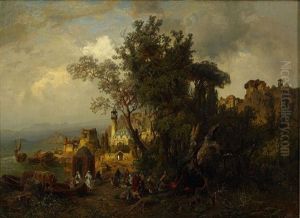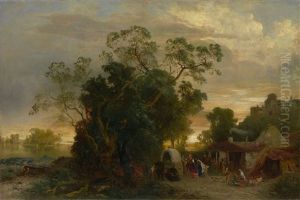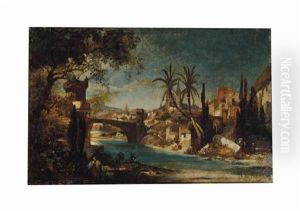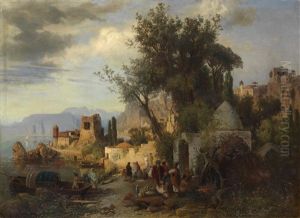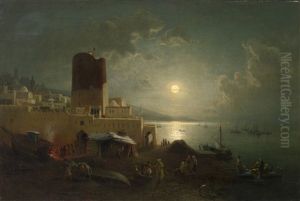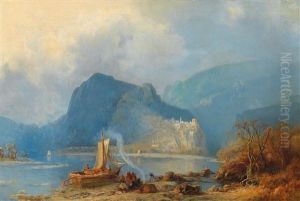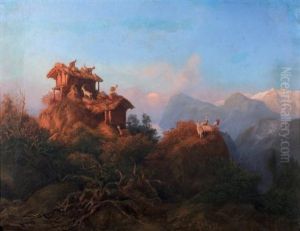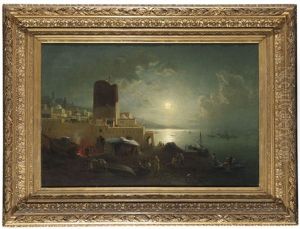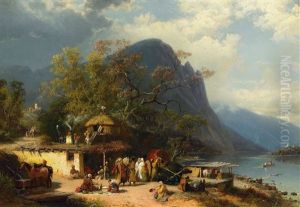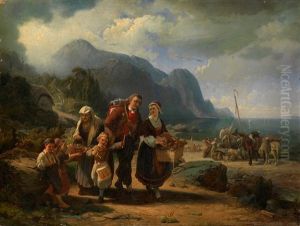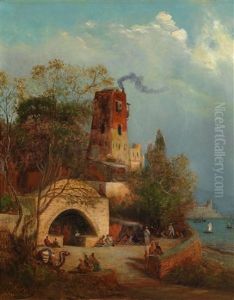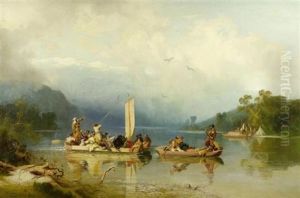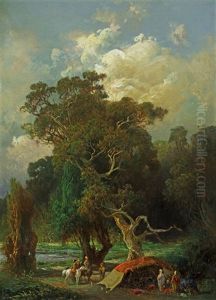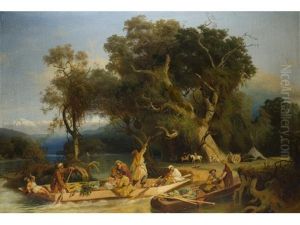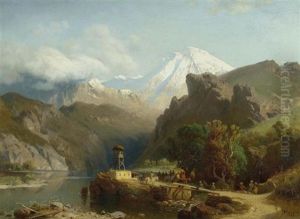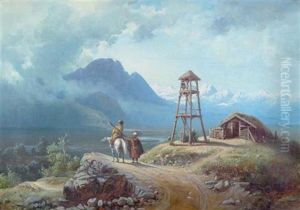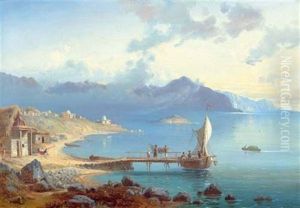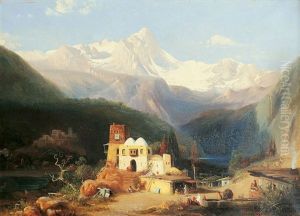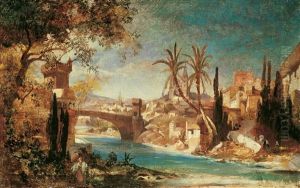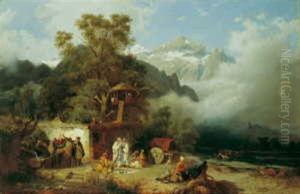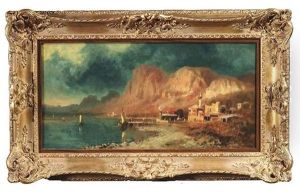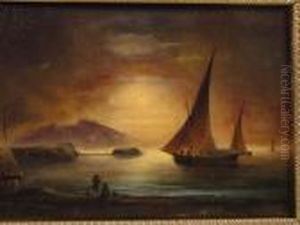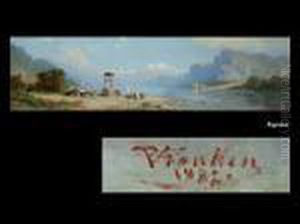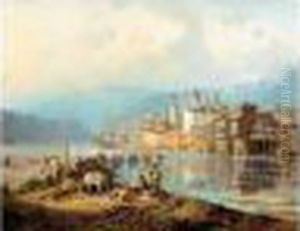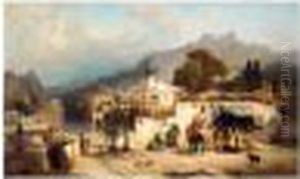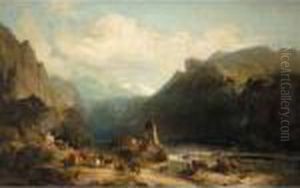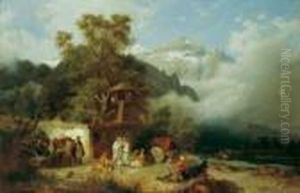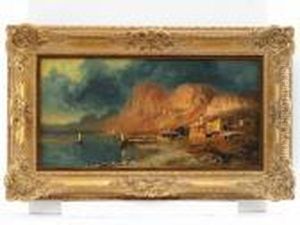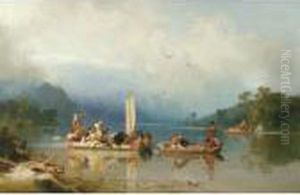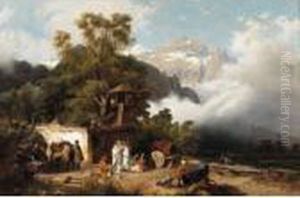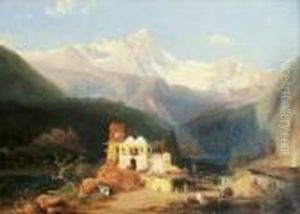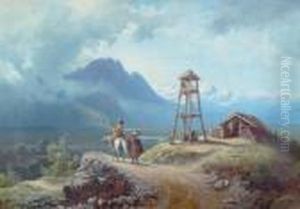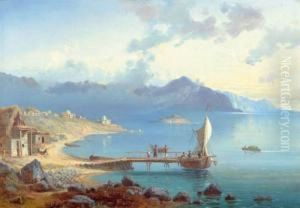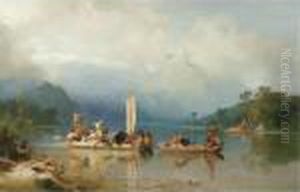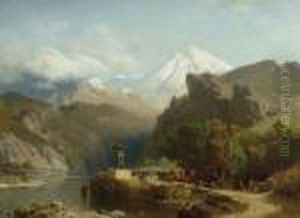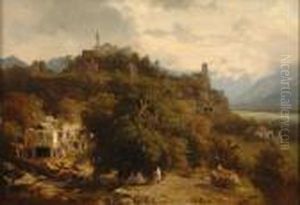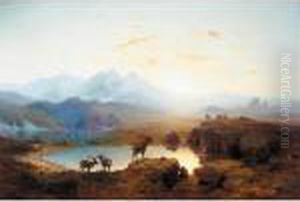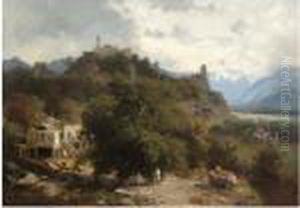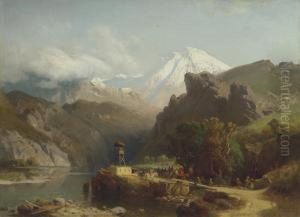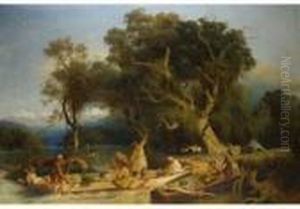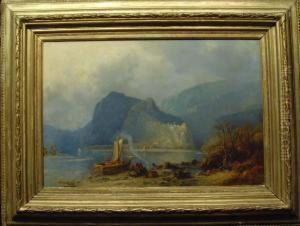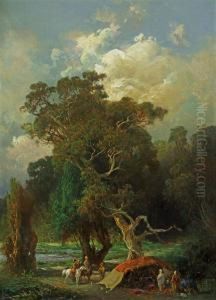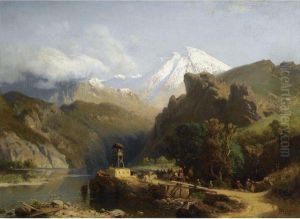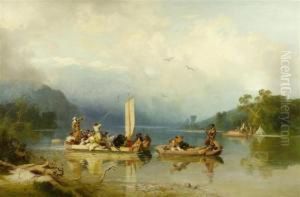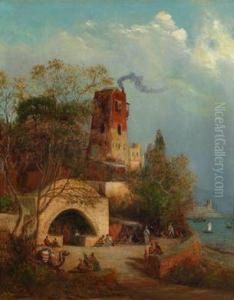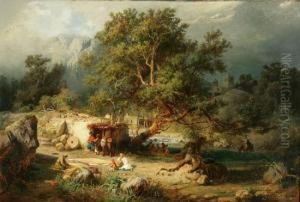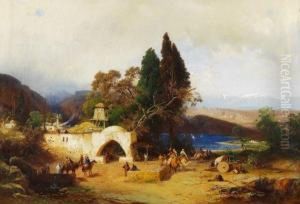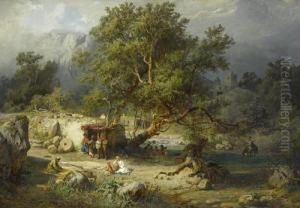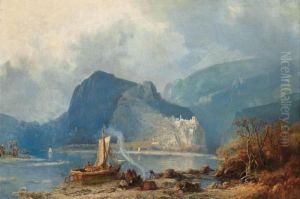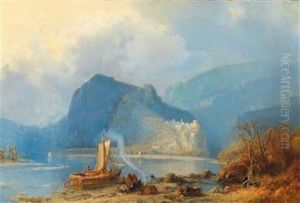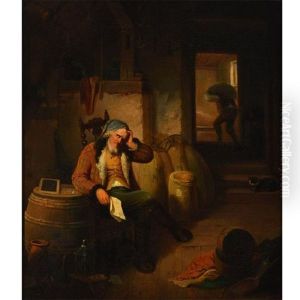Paul Von Franken Paintings
Paul von Franken was a German-born painter known for his landscape and orientalist works. Born on August 15, 1818, in Oberbachem near Bonn, Germany, Franken showed an early interest in the arts and went on to study painting at the Düsseldorf Academy, one of the leading art schools in Germany at the time.
During his studies, he was influenced by the Düsseldorf school of painting, which emphasized detailed landscapes and historical subjects. Franken's early works comprised mainly of the romantic Rhineland landscapes, which were popular among the middle-class art patrons of his time.
In 1842, he traveled to the Baltic region and Russia, where he was inspired by the vast landscapes and diverse cultures, which would later become a significant feature in his work. After traveling through various European countries, Franken settled in the Crimea in 1853, which was then part of the Russian Empire.
In Crimea, Franken was captivated by the exotic beauty of the region. He painted numerous scenes of the Crimean landscape, including its rugged mountains, expansive steppes, and the daily life of its inhabitants, particularly the Tatars. His works from this period are characterized by fine detail, bright colors, and a harmonious composition. They were well received and earned him a reputation as a skillful landscape and orientalist painter.
Franken married a Russian painter, Alexandra von Franken (born Alexandrine Pietrovna Liubatowich), and they often worked together. His wife also had a considerable influence on his art, and their collaborative works were signed as 'P & A von Franken' to reflect their partnership.
Paul von Franken's paintings gained considerable popularity in Russia, and he was commissioned to paint for the Russian imperial family. His works are part of several important collections, including those of Russian museums. Franken continued to paint the landscapes of Crimea until his death on February 16, 1884, in Alupka, Crimea. His legacy lives on through his paintings, which continue to be appreciated for their depiction of the 19th-century Crimean Peninsula.
